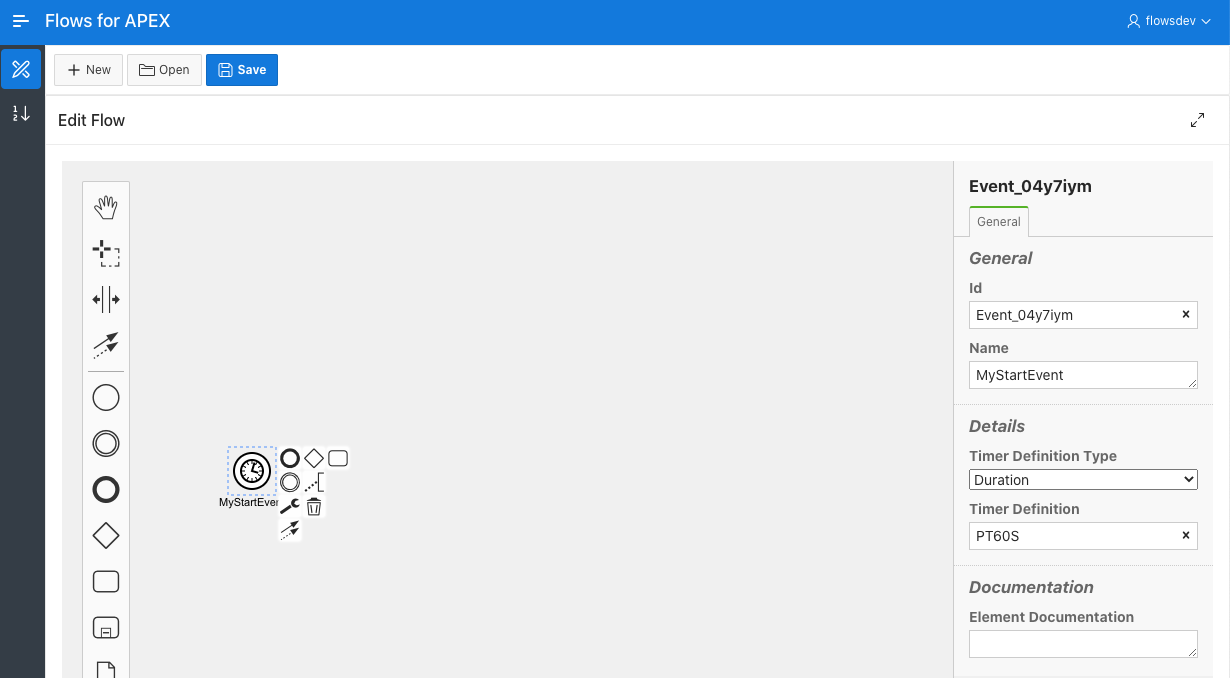Start and Stop Events
General
All process diagrams must start with a Start Event and with one or more End Events.

Start Event
All processes must start with one (and only one) Start Event.
Good BPMN style would say that a Start Event should be named with a verb and a noun to describe the starting status. Examples would be ‘Receive Order’ or ‘Employee Resigns’.
Start Event with Timer Event
A Start Event may contain an optional Timer Event. This will delay the start of the process until a defined time, until a delay occurs (duration), or on a repetitive basis (cycle).
To define a Timer Start Event, first drag a Start Event onto your new process canvas. Select the ‘Change Type’ spanner icon on the pop-up menu, and select Timer Start Event from the menu. To then specify the Timer Configuration, use the Properties Panel on the right of the screen. Under Timer, select the type of timer you want. Under Timer Definition, specific the required time or interval, as below.
- Date: specifies a date and time for the process to start, using an ISO 8601 date/time string.
- Duration: specifies a delay from the current time or the process to start, using an ISO 8601 duration string.
- Cycle Timer: for an initial run and then repeats an definied intervals, using a ISO 8601 Repeating Interval specifier. The alternate BPMN syntax for repeating intervals using CRON syntax is not currently supported.

For more information on Timer Events, see the documentation Timer Events page.
End Event
A process must be defined with at least one End Event, which ends the process on that process branch.
A process can be defined with more than one End Event if it has multiple branches. Each branch shuld have an End Event.

When the final End Event is met for a Process, the Process Instance is complete.
Terminate End Event
A Terminate End Event in the top level of a process (i.e., not in a sub process) will terminate all current branches running in the process, and cause the Process to complete.

Terminate End Events in a Sub Process.
Starting with Flows for APEX V5.0, Terminate End Events may also be put into in any sub-process.
The behaviour of a Terminate End Event in a sub process is to immediately end processing in the sub process, and return control to the next object in the parent process.
Note that if the sub process has an error bounday event defined on it, the terminating sub process will NOT return to the error handler; it returns to the next event on the normal forward path.
Any nested child sub processes that are running below the the sub process containing the terminate end event, are also terminated.